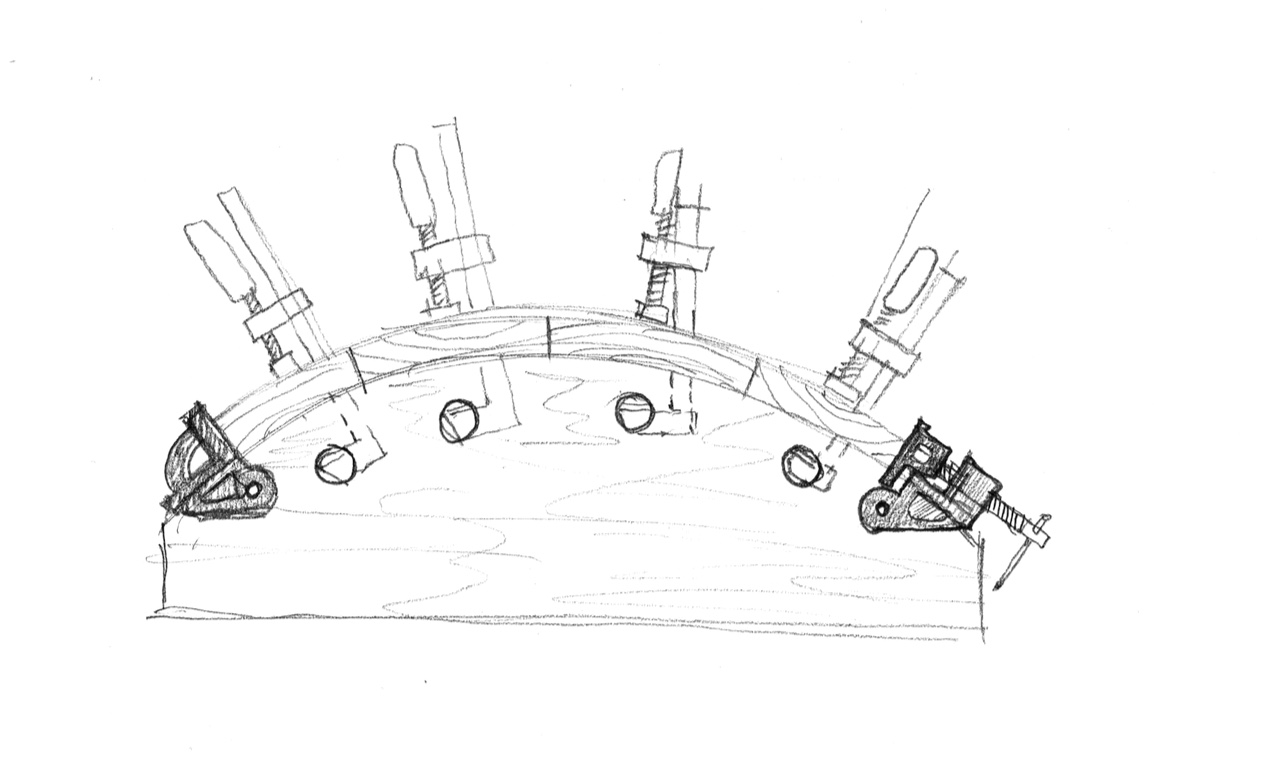We may receive a commission when you use our affiliate links. However, this does not impact our recommendations.
 Building a sash clamp is quite easy. Begin by milling a hardwood bar to the appropriate thickness. The bar’s thickness should allow it to travel smoothly between the sash clamp’s shoulders. Next, mount the sash clamp over it and mark the location of the pin or bolt hole on the bar. Then, drill multiple holes along the bar for adjustability.
Building a sash clamp is quite easy. Begin by milling a hardwood bar to the appropriate thickness. The bar’s thickness should allow it to travel smoothly between the sash clamp’s shoulders. Next, mount the sash clamp over it and mark the location of the pin or bolt hole on the bar. Then, drill multiple holes along the bar for adjustability.
To create a recommended T-bar, mill a groove on the underside of the entire bar and the adjacent base bar. Spread glue on the matching surfaces of the long, loose tongue-and-groove joint and clamp the two together. Milling a loose tongue-and-groove joint between the two parts of the T makes glue-up alignment much easier.

Restoring a Compressed T-bar
As mentioned before, extended repetitive use can cause wooden bars to undergo debilitating deformation. The mounting holes may enlarge, and the bar’s top surface can compress, causing the sash heads’ clamping faces to pivot outward. I found a simple solution to solve this: glue a thin strip of wood over the bar. Alternatively, mill the top smooth, glue a thicker hardwood strip, and mill until the sash heads and their retaining pins or bolts fit snugly.
Additional Uses for Sash Clamps
Here are a few more ways to harness the power of a sash clamp. Check the illustrations below to learn how to create more jigs based on sash clamp heads:
- Short Sash F-Clamp: Shape and glue three parts to build a tall carving cradle that fits inside your bench vise. The workpiece is clamped inside the cradle, which can rotate in the vise to present different angles, assisting in easy carving.

- Long F-Clamp: Make a long F-clamp using the same principle as above.

- Dedicated Cradle with Removable Jaws: Create a cradle with removable jaws to accommodate a variety of projects, from spoons to bowls and beyond.

- Using sash clamps on a makeshift form to help in clamping a vaulted shape.

I hope this series on sash clamps, a tool much loved in the UK but seldom seen in the USA, will whet the appetite of North American woodworkers to find a place for them in their shops. From building and restoring these versatile clamps to creating useful jigs, these entries provide essential insights to enhance your woodworking toolkit and project outcomes.
Here are some supplies and tools we find essential in our everyday work around the shop. We may receive a commission from sales referred by our links; however, we have carefully selected these products for their usefulness and quality.













